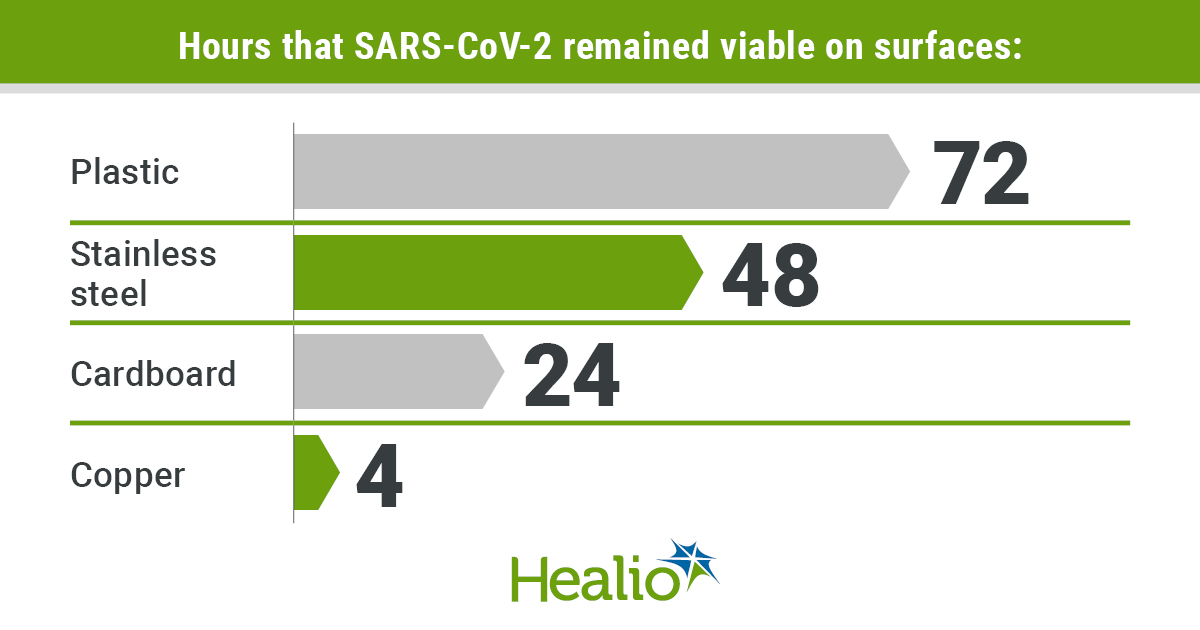Novel coronavirus remains viable, infectious on some surfaces for days
Click Here to Manage Email Alerts
SARS-CoV-2, the novel coronavirus that causes COVID-19, remains viable and infectious in aerosols for hours and on some surfaces for days, according to a study published today in The New England Journal of Medicine.
Researchers detected viable SARS-CoV-2 in aerosols throughout the duration of their experiment — 3 hours — with a reduction in infectious titer similar to SARS-CoV-1, which caused SARS.
They found that SARS-CoV-2 remained viable for up to 72 hours on plastic and 48 hours on stainless steel, longer than copper or cardboard. They did not detect viable SARS-CoV-2 for longer than 4 hours on copper or 24 hours on cardboard. SARS-CoV-1 was detected for no longer than 8 hours on these two surfaces.
“We found that the stability of SARS-CoV-2 was similar to that of SARS-CoV-1 under the experimental circumstances tested,” the researchers wrote. “This indicates that differences in the epidemiologic characteristics of these viruses probably arise from other factors, including high viral loads in the upper respiratory tract and the potential for persons infected with SARS-CoV-2 to shed and transmit the virus while asymptomatic.”

The COVID-19 pandemic has grown to include more than 190,000 reported cases, including more than 5,200 reported cases in the United States. The global SARS outbreak in 2003 infected a total of 8,098 people.
The authors of the new paper said the results of their experiments “indicate that aerosol and fomite transmission of SARS-CoV-2 is plausible.”
“These findings echo those with SARS-CoV-1, in which these forms of transmission were associated with nosocomial spread and super-spreading events, and they provide information for pandemic mitigation efforts,” they wrote. – by Gerard Gallagher
Disclosures: Please see the study for a list of the authors’ relevant financial disclosures.

